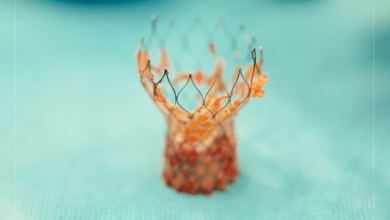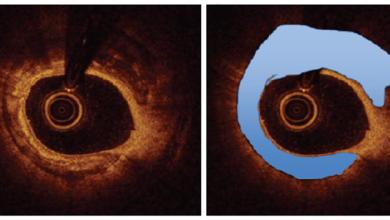Search results
PROMOTED
Author(s):
Nicolas M Van Mieghem
,
Kendra J Grubb
,
David Hildick-Smith
,
et al
Start date:
Mar 26, 2024
Author(s):
Olivier Bar
Added:
3 years ago
An Introduction to Radiation
X-rays, so-called because their nature was at the time unknown, were discovered by the German physicist Wilhelm Roentgen in 1895, one year before the discovery of ‘natural’ radioactivity by Henri Becquerel.1
X-rays found application in radiography a few years after their discovery, although the first side effect attributed to radiation injury (depilation) had been…
View more
Author(s):
Demosthenes G Katritsis
,
Ioannis Pantos
Added:
3 years ago
The functional severity of atherosclerotic coronary lesions is the single most important prognostic factor in patients with documented coronary artery disease (CAD). Assessment of the haemodynamic significance of coronary artery lesions by invasive fractional flow reserve (FFR) measurement now has an I-A indication by the European Society of Cardiology (ESC) to identify haemodynamically relevant…
View more
Author(s):
Matt Thompson
Added:
3 years ago
Since its inception in the early 1990s, endovascular repair (EVR) of aneurysms has been subjected to analysis in several randomised controlled trials. Now it is a mainstay of treatment for abdominal aortic aneurysms (AAA). As the technique has moved from conception through competitive analysis and finally into mainstream practice, several issues have remained controversial. These will be…
View more
Author(s):
Tanush Gupta
,
Michael Weinreich
,
Mark Greenberg
,
et al
Added:
3 years ago
Percutaneous coronary intervention (PCI) is the most commonly used revascularisation modality for obstructive coronary artery disease.1 Despite significant advances in PCI over the past 40 years, severe coronary calcification remains a challenge for successful PCI.2,3 Up to 20% of patients undergoing PCI are estimated to have moderate to severe coronary calcification.4,5
Heavily calcified…
View more
Author(s):
Pascal Thériault-Lauzier
,
Marco Spaziano
,
Beatriz Vaquerizo
,
et al
Added:
3 years ago
Valvular Disease
Aortic valve
Severe symptomatic aortic stenosis (AS) bears a dismal prognosis. The mean survival is 2.0 to 4.7 years after the onset of angina, 0.8 to 3.8 years after the onset of syncope and 0.5 to 2.8 years after the onset of congestive heart failure.1 Surgical aortic valve replacement (SAVR) is the mainstay of treatment for these patients.2 In the last decade transcatheter…
View more
Author(s):
Angela McInerney
,
Rafael Vera-Urquiza
,
Gabriela Tirado-Conte
,
et al
Added:
2 years ago
Author(s):
Jonathan Xinguo Fang
,
Arthur Sze-Yue Yung
,
Simon Cheung-Chi Lam
,
et al
Added:
1 year ago
Author(s):
Lavinia Gabara
,
Jonathan Hinton
,
Julian P Gunn
,
et al
Added:
3 years ago
The optimal assessment and management of patients presenting with recent onset chest pain is achieved by acquiring information about the coronary anatomy and physiology, enabling decisions to be made based upon evidence of ischaemia at a patient-level and at lesion-level. There are robust data indicating that the visual assessment of stenosis severity alone does not provide enough information…
View more
Author(s):
Evan Shlofmitz
,
Allen Jeremias
,
Richard A Shlofmitz
,
et al
Added:
3 years ago
Coronary calcification has posed challenges to successful revascularisation since the development of percutaneous coronary intervention (PCI).1 Coronary artery calcification worsens clinical outcomes irrespective of the revascularisation strategy.2–4 Despite significant improvements in stent design over the past decades, including an improved ability to deliver a stent, severe calcification…
View more
















